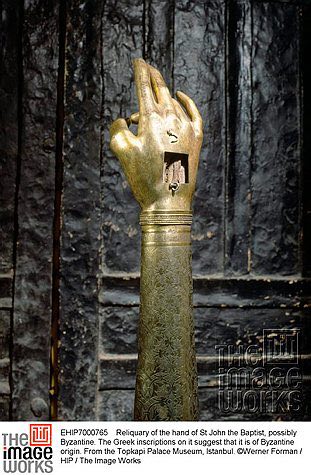GREY HANDSHAKE:

History of Grey handshake
According to the late Japie Steyl, school captain in 1927, the Grey handshake originated in 1922 and became general practice in 1924.
In 1565 the king of France, Charles IX ordained that each master knife maker affix an emblem on the blade of his knives in order to guarantee the originality and quality of his workmanship. Master knife maker Joseph Opinel chose as his emblem the Crown Hand: the right hand, called the benevolent hand, with three fingers raised and two fingers tucked in and a crown under the hand. This is depicted on the coat of arms of the village of St. Jean-de-Maurienne.
Since the 6th century, the village cathedral had a shrine containing three fingers of the hand of Saint John the Baptist. These fingers were brought back from Alexandria in Egypt by Thécle, a young girl of the village. The crown is an indication that the person was someone of royalty.
It is possible that a knife or sword, with the Opinel emblem, could have been brought to Bloemfontein by a soldier serving in France during the First World War.
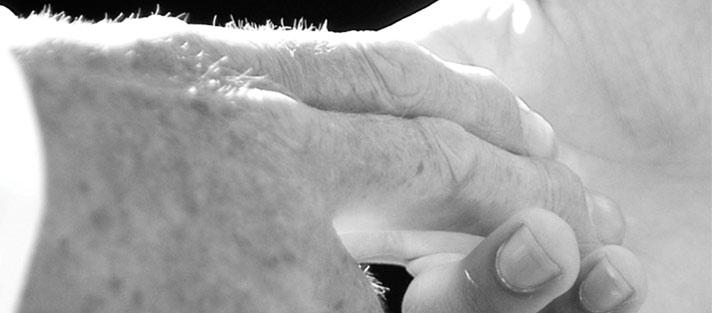
History of Opinel Knife Maker
Joseph Opinel began making knives in 1890 in Savoie, France as a simple working man’s or peasant’s knife. It proved popular with the local farmers, herdsmen, and paysans-vignerons (peasant winemakers) of the area. In 1897, a series of twelve sizes, numbered 1 to 12, was developed. From 1901–1903, Joseph Opinel built his first factory in Pont de Gévoudaz and produced a machine for mass production of the knife’s wooden handles.
The company hired peddlers to sell the knives and opened a small shop near the Chambéry railway junction, where the knives became popular with PLM railroad workers, who in turn spread word of the brand throughout France. By 1909, Opinel had registered his first trademark for the Opinel knife, choosing the main couronnée (“crowned hand”) as his emblem. A few years later Opinel annual sales were in the hundreds of thousands, and by the start of World War II as many as 20 million knives had been sold.
The Opinel Virobloc or safety twistlock mechanism was invented by Marcel Opinel in 1955, increasing the safety and versatility of the knife by allowing the blade to be locked in the open position. In 2000, the Virobloc locking mechanism was improved to allow locking the blade in either the open or closed position.
In 1985 the Victoria and Albert Museum in London selected the Opinel knife as part of an exhibit celebrating the “100 most beautiful products in the world”, featuring the Opinel alongside the Porsche 911 sports car and the Rolex watch. The Opinel was also selected as one of the 999 classic designs in Phaidon Design Classics, and has been exhibited by the New York’s Museum of Modern Art (MOMA) as a design masterpiece.
It is legal to buy an Opinel in the United Kingdom. However, with the exception of the smaller models with a blade length of less than 3 inches and without a locking mechanism, it is illegal to carry one in public without good reason.
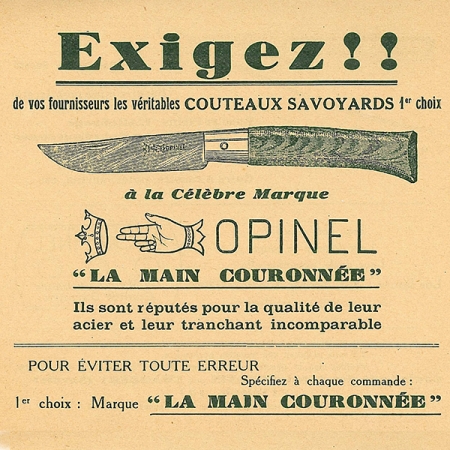
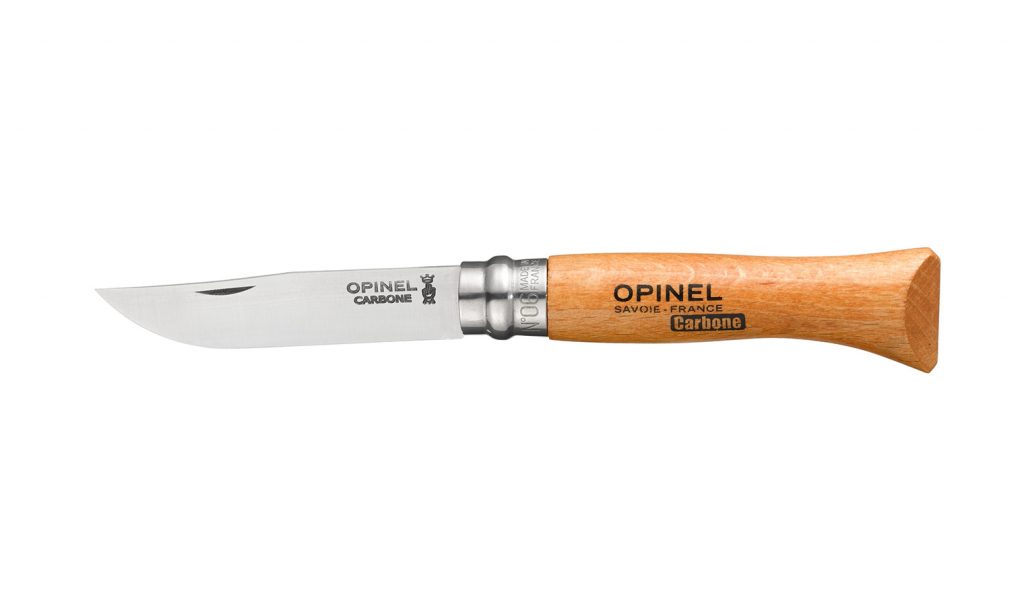

History of St. Jean-de-Maurienne
The Maurienne is the southernmost biggest valley cross-cutting the Savoy making it easy to travel from France through to Italy. At the heart of the valley, on the banks of the Arc river and surrounded by towering mountains with the Aiguilles d’Arves as a backdrop, you will find a small village previously known as Maurienne.
Gontran, King of Burgundy, conquered the region in the 6th century allowing the bishop of Turin to retain religious authority over it. As legend would have it, it was at this time that Saint Thècle brought the three fingers of saint Jean-Baptiste, said to have baptised Christ, to the town. In order to accept such honourable remains, Gontran made the village an episcopal see. The village took its name and coat of arms from the remains and became the valley’s capital. It was called Saint-Jean-de-Maurienne and was symbolised by « the blessing hand », a hand held up in the traditional pose of blessing. This event is celebrated at the Bread Festival on the first Thursday of every August.
As the capital of a diocese, the town built various religious monuments, many of which do not exist to this day. The cathedral, however, is still standing. These first buildings were rebuilt after the unrest of the early Middle-Ages using material found on-site : fragments of sculptures from the Carolingian period were re-used. Peace was re-established by the first Count of the Maurienne, Humbert the White-Handed, who founded the House of Savoy. His descendants would become the counts and then the dukes of a state extending from Bresse to the County of Nice and Piedmont, and later they would also become the respective Kings of Sardinia in 1718 and of Italy up until 1946. Although, by favouring a united Italy, they renounced their province of origin in 1860.
The Maurienne named their princes « guardians of the Alps ». Humbert was buried in front of the cathedral, as were many of his descendants : Amadeus I, Boniface le Rolland Saint-Jean-de-Maurienne, thus, became the first necropolis for the Savoy dynasty.
As for the cathedral, dating from the 11th century, its framework is considered to be one of the oldest in France as several of its beams were cut and fitted as far back as 1074 and 1075. The space under the cathedral’s altar was converted into a crypt, was subsequently forgotten and then rediscovered in 1958 and can be visited today : it is testimony to the, then, up-and-coming techniques of Roman art. Nearby, the Notre-Dame church has maintained its chevet and a beautiful Roman doorway to this day. During the 15th century, the bishops built many Gothic masterpieces : a cloister and an outstanding set of church stalls. The Bishop’s palace, which is opposite the cathedral, was decorated largely by Monsignor of Martiniana during the second half of the 18th century. It has been restored to its original 18th century splendour and houses the Tourist Office and the Museum of Folk Costumes, Art and Tradition. The museum displays a remarkable collection of traditional costumes from the Maurienne, which are considered to be the most original in the French Alps.
Conflict between the Count and the Bishop was rife during the Middle Ages. In 1326, after a rebellion of the inhabitants from Arves against the Bishop, the two lords shared power between themselves and elected an impartial judge who presided in a fortified house not far from the bell tower. Saint-Jean-de-Maurienne was built in the shape of a cross which can still be seen to this day by following the “rue Saint-Antoine” from the north to the south. Further on it becomes the “rue du collège”. This road took its name from Saint-Joseph secondary school which is housed in the old Bernardines convent, a beautiful example of Cistercian architecture from the 18th century.
Long before large industries took over from skilled trades, Joseph Opinel, who came from a family of tool-makers, designed and created the famous Opinel knife of which you can learn more at the Opinel Museum, dedicated to its maker.
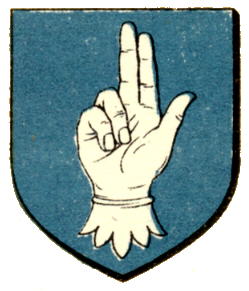
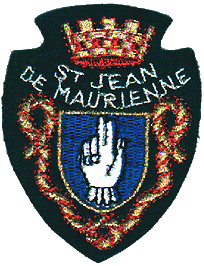
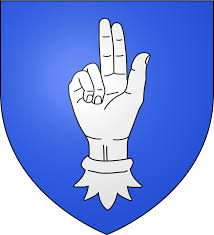
Reliquary of the hand of St John the Baptist
